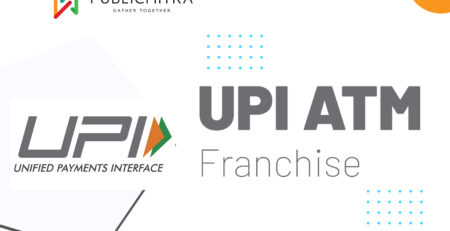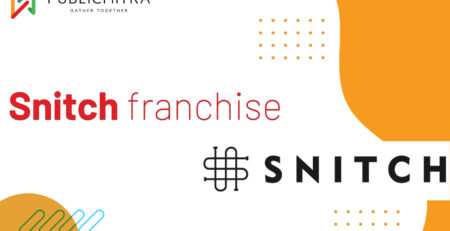How to Become a Blinkit Seller in 2025: Complete Guide to Quick Commerce Success
Introduction to Blinkit Selling Opportunities
The quick commerce revolution in India has transformed how consumers shop for everyday essentials, with Blinkit leading this transformation as one of the most prominent instant delivery platforms. As a subsidiary of Zomato, Blinkit has captured significant market share in the rapid delivery space, making it an attractive platform for entrepreneurs and retailers looking to expand their business reach.
According to a Citi report, by the end of FY25, India’s quick commerce market is projected to reach $9 billion, highlighting the immense potential for sellers entering this space. The growing quick commerce market is projected to reach $5.5 billion in India by 2025, presenting unprecedented opportunities for business growth.
Blinkit’s evolution from Grofers to its current status under Zomato’s umbrella has created a robust ecosystem where sellers can tap into millions of customers seeking instant gratification through rapid delivery services. Understanding how to become a successful Blinkit seller requires comprehensive knowledge of the platform’s requirements, commission structure, earning potential, and operational dynamics.
Understanding Blinkit’s Business Model and Market Position
The Zomato-Blinkit Connection
Zomato acquired Blinkit, a struggling 10-min grocery delivery startup, in a $568.1 million all-stock deal in 2022, transforming the platform’s capabilities and market reach. This strategic acquisition has strengthened Blinkit’s position in the quick commerce sector, providing sellers with access to Zomato’s extensive logistics network and customer base.
The acquisition has enabled Blinkit to leverage Zomato’s technological infrastructure, delivery network, and brand recognition, creating a more robust platform for sellers to build their businesses. This merger has resulted in improved operational efficiency, better customer acquisition, and enhanced seller support systems.
Market Share and Growth Trajectory
Blinkit transformed from an online grocery platform to quick commerce with a 46% market share in 2023, achieving an annual GMV of ₹142 billion. This substantial market presence indicates the platform’s reliability and growth potential for new sellers entering the ecosystem.
The platform’s focus on ultra-fast delivery, typically within 10-20 minutes, has revolutionized consumer expectations and created a new category of commerce that prioritizes speed and convenience. This positioning makes Blinkit an ideal platform for sellers dealing in everyday essentials, groceries, personal care items, and other fast-moving consumer goods.
How to Become a Blinkit Seller: Complete Registration Process
Initial Requirements and Eligibility
Before diving into the registration process, potential sellers must understand the basic requirements for becoming a Blinkit partner. The platform welcomes various types of sellers, from individual entrepreneurs to established retailers looking to expand their digital presence.
Key eligibility criteria include:
- Valid business registration or individual seller documentation
- Product inventory that aligns with Blinkit’s category requirements
- Ability to maintain consistent stock levels
- Commitment to quality standards and customer service
- Physical location suitable for inventory storage and management
Step-by-Step Registration Process
1. Initial Application Submission The journey begins by visiting Blinkit’s official partner portal and submitting your initial application. This involves providing basic business information, contact details, and preliminary product categories you intend to sell.
2. Documentation Verification Once your initial application is reviewed, Blinkit’s team will request specific documentation including business licenses, tax registrations, product quality certificates, and bank account details for payment processing.
3. Product Catalog Setup After document verification, sellers need to create their product catalog with detailed descriptions, high-quality images, pricing information, and inventory quantities. This step is crucial as it determines your products’ visibility and appeal to customers.
4. Store Setup and Integration The final step involves setting up your virtual store on the Blinkit platform, integrating inventory management systems, and configuring delivery logistics. Blinkit provides comprehensive support during this phase to ensure smooth onboarding.
Required Documentation Checklist
To streamline your registration process, prepare the following documents:
- Business registration certificate or individual seller ID
- GST registration certificate (where applicable)
- Bank account statements and canceled checks
- Product quality certificates and compliance documents
- Address proof for business location
- PAN card and Aadhaar card copies
- Product images and detailed descriptions
- Inventory list with pricing information
Blinkit Commission Structure and Fee Analysis
Understanding Commission Rates
Blinkit charges sellers a commission fee ranging from 8% to 15% of the product’s value for using platform features. However, recent updates suggest a more nuanced approach to commission calculation.
Blinkit’s commission model in 2025 follows a variable, slab-based structure where sellers are charged between 2% to 18% depending on product type, price, and category. This flexible structure allows sellers to optimize their pricing strategies based on their specific product mix.
Detailed Commission Breakdown
The commission structure varies based on several factors:
Product Category-Based Rates:
- Essential groceries: 8-12%
- Personal care items: 10-15%
- Electronics and gadgets: 12-18%
- Specialty items: 15-20%
Order Value-Based Structure: Blinkit charges commission ranging from 8% to 15% when orders are below ₹700 and charges 12% to 15% when orders are below ₹1000. Additionally, Blinkit charges a delivery fee when the order is below ₹250.
Additional Fee Components
Beyond the basic commission, sellers should account for various additional charges:
Platform Commission: Typically between 10% to 20% depending on product category, GST on Commission: 18% GST applied on the Blinkit commission fee, TCS (Tax Collected at Source): 1% on the selling price, Fulfillment Costs.
These additional costs can significantly impact profit margins, making it essential for sellers to calculate their total cost of selling before setting product prices.
Earning Potential for Blinkit Sellers
Revenue Projections and Income Streams
Blinkit offers an annual earning potential of up to 30% on your investment, making it an attractive proposition for entrepreneurs looking to enter the quick commerce space. However, actual earnings depend on various factors including product selection, pricing strategy, inventory management, and customer service quality.
Factors Affecting Seller Earnings
1. Product Mix and Demand High-demand products with good profit margins typically generate better returns. Fast-moving consumer goods, daily essentials, and seasonal items often perform well on the platform.
2. Inventory Management With proper management, inventory, and location, sellers can earn steady monthly income through Blinkit. Efficient inventory management reduces wastage and ensures consistent availability of popular items.
3. Operational Efficiency Sellers who optimize their operations, maintain quality standards, and provide excellent customer service typically achieve higher sales volumes and better profit margins.
Monthly Earning Estimates
Based on industry analysis and seller testimonials, Blinkit sellers can expect varying income levels:
Small-Scale Sellers (₹50,000-₹2,00,000 monthly revenue):
- Net profit margin: 15-25%
- Monthly earnings: ₹7,500-₹50,000
Medium-Scale Sellers (₹2,00,000-₹10,00,000 monthly revenue):
- Net profit margin: 20-30%
- Monthly earnings: ₹40,000-₹3,00,000
Large-Scale Sellers (₹10,00,000+ monthly revenue):
- Net profit margin: 25-35%
- Monthly earnings: ₹2,50,000+
GST Requirements and Tax Compliance
GST Registration Necessity
One of the most frequently asked questions is whether sellers can operate on Blinkit without GST registration. The answer depends on your annual turnover and business structure.
Mandatory GST Registration:
- Annual turnover exceeding ₹20 lakhs (₹10 lakhs for northeastern states)
- Inter-state sales regardless of turnover
- E-commerce operations through platforms like Blinkit
GST Benefits for Blinkit Sellers:
- Input tax credit on purchases
- Professional business image
- Compliance with platform requirements
- Access to larger customer base
Tax Implications and Planning
Selling on Blinkit involves various tax considerations:
1. GST on Sales Standard GST rates apply based on product categories, typically ranging from 5% to 28%.
2. TCS (Tax Collected at Source) 1% TCS is collected on the selling price, which sellers can claim as credit against their tax liability.
3. Income Tax Profits from Blinkit sales are subject to income tax as per applicable slabs for individuals or corporate tax rates for companies.
Delivery Partner Earnings and Opportunities
Blinkit Delivery Partner Program
Blinkit offers delivery partners the opportunity to earn up to ₹50,000 with a joining bonus of up to ₹4,000 and up to ₹10 lacs medical insurance. This presents an additional income opportunity for individuals looking to supplement their earnings.
Delivery Partner Benefits
The delivery partner program offers several attractive features:
- Flexible working hours
- Competitive pay structure
- Insurance coverage
- Performance-based incentives
- Weekly payment cycles
Earning Structure for Delivery Partners
Delivery partner earnings typically depend on:
- Number of deliveries completed
- Distance covered
- Peak hour bonuses
- Customer ratings and feedback
- Geographical location
Average monthly earnings for active delivery partners range from ₹25,000 to ₹50,000, depending on commitment level and operational efficiency.
Top-Selling Product Categories on Blinkit
High-Demand Product Segments
Understanding which products perform well on Blinkit is crucial for seller success. The platform’s focus on instant delivery makes certain categories particularly popular:
1. Daily Essentials
- Milk and dairy products
- Bread and bakery items
- Cooking oils and spices
- Rice, wheat, and pulses
2. Personal Care Items
- Toiletries and hygiene products
- Skincare and cosmetics
- Hair care products
- Health supplements
3. Snacks and Beverages
- Packaged snacks and chips
- Soft drinks and juices
- Tea, coffee, and health drinks
- Ice cream and frozen desserts
4. Household Items
- Cleaning supplies
- Paper products
- Kitchen utensils
- Small appliances
Seasonal and Trending Products
Successful Blinkit sellers also capitalize on seasonal demands and trending products:
- Festival-specific items
- Seasonal fruits and vegetables
- Weather-appropriate products
- Health and wellness trends
Blinkit Store Setup and Management
Physical Store Requirements
Blinkit looks for passionate entrepreneurs who want an opportunity to join the instant-commerce revolution in India by running mini-warehouses or partner stores. The platform’s vision includes enabling anyone to open their storefront on Blinkit.
Store Location and Size
Optimal store locations for Blinkit partnerships include:
- High-density residential areas
- Commercial complexes
- Areas with good connectivity
- Locations with adequate parking and accessibility
Store size requirements typically range from 200-1000 square feet, depending on the product mix and target customer base.
Inventory Management Best Practices
Effective inventory management is crucial for Blinkit seller success:
1. Demand Forecasting Use historical data and seasonal trends to predict demand and maintain optimal stock levels.
2. Product Rotation Implement FIFO (First In, First Out) principles to minimize product expiry and wastage.
3. Technology Integration Utilize inventory management software to track stock levels, automate reordering, and generate performance reports.
4. Quality Control Maintain strict quality standards to ensure customer satisfaction and reduce returns.
Profitability Analysis for Blinkit Sellers
Revenue Optimization Strategies
Blinkit’s revenue model works well because it makes room for high-profit margins, with partner stores charged 8 to 15% on every order made through the Blinkit app. Sellers can maximize profitability through strategic approaches:
1. Product Mix Optimization Focus on high-margin products while maintaining popular low-margin items to drive traffic.
2. Efficient Operations Streamline processes to reduce operational costs and improve service quality.
3. Customer Retention Build repeat customer base through consistent quality and service excellence.
4. Strategic Pricing Balance competitive pricing with profit margins by understanding market dynamics.
Break-Even Analysis
Most Blinkit sellers achieve break-even within 6-12 months, depending on:
- Initial investment size
- Product categories chosen
- Operational efficiency
- Market competition
- Customer acquisition rate
Long-Term Profitability Factors
Sustainable profitability on Blinkit depends on:
- Consistent product quality
- Efficient inventory management
- Strong customer relationships
- Adaptability to market changes
- Continuous process improvement
Contact Information and Support
Official Blinkit Contact Channels
For aspiring sellers looking to connect with Blinkit:
Partnership Inquiries:
- Official website: blinkit.com/partner
- Franchise opportunities: blinkit.com/franchise
Application Process: Interested entrepreneurs can get started on their application through the official partnership portal.
Support and Training
Blinkit provides comprehensive support to its sellers including:
- Initial onboarding assistance
- Training on platform operations
- Marketing and promotional support
- Technical assistance for inventory management
- Regular performance reviews and optimization suggestions
Market Competition and Future Prospects
Competitive Landscape
The quick commerce sector in India is highly competitive, with several players vying for market share. Blinkit competes with platforms like Zepto, Swiggy Instamart, and BigBasket Now. However, its strong backing from Zomato and established market presence provide competitive advantages.
Can Blinkit Overtake Amazon?
While Amazon dominates overall e-commerce, Blinkit’s focus on ultra-fast delivery creates a different value proposition. The platforms serve different customer needs – Amazon for variety and long-term planning, Blinkit for immediate requirements. Rather than direct competition, they represent different segments of the digital commerce ecosystem.
Future Growth Prospects
According to Morgan Stanley, Blinkit’s take rate for the October-December quarter stood at 17.9 per cent, indicating strong financial performance. The platform’s continuous innovation in logistics, technology, and customer experience positions it well for future growth.
Success Strategies for Blinkit Sellers
Customer-Centric Approach
Successful Blinkit sellers prioritize customer satisfaction through:
- Accurate product descriptions
- Timely order fulfillment
- Quality assurance
- Responsive customer service
- Competitive pricing
Technology Adoption
Leverage technology for:
- Inventory tracking and management
- Sales analytics and reporting
- Customer relationship management
- Automated reordering systems
- Performance monitoring
Continuous Learning and Adaptation
Stay updated with:
- Market trends and consumer preferences
- Platform policy changes
- New product opportunities
- Competitive strategies
- Industry best practices
Financial Planning and Investment Requirements
Initial Investment Considerations
Starting as a Blinkit seller requires careful financial planning:
1. Inventory Investment Initial stock purchase typically ranges from ₹50,000 to ₹5,00,000 depending on store size and product mix.
2. Infrastructure Costs Store setup, storage equipment, and technology infrastructure require additional investment.
3. Working Capital Maintain sufficient working capital for day-to-day operations and inventory replenishment.
4. Marketing and Promotion Budget for initial marketing activities to establish brand presence and attract customers.
Return on Investment Timeline
Most successful Blinkit sellers report positive ROI within:
- 6-8 months for experienced retailers
- 8-12 months for new entrepreneurs
- 12-18 months for complex product categories
Financial Management Best Practices
Implement robust financial management through:
- Regular profit and loss analysis
- Cash flow monitoring
- Tax compliance and planning
- Investment in growth opportunities
- Risk management strategies
Quality Standards and Compliance
Product Quality Requirements
Blinkit maintains strict quality standards for all products sold on its platform:
- Fresh produce must meet specific freshness criteria
- Packaged goods should have adequate shelf life
- All products must comply with food safety regulations
- Regular quality audits and inspections
Compliance Framework
Sellers must adhere to:
- Food Safety and Standards Authority of India (FSSAI) regulations
- Bureau of Indian Standards (BIS) requirements
- Environmental compliance for packaging
- Platform-specific quality guidelines
Customer Feedback and Ratings
Maintain high customer satisfaction through:
- Consistent product quality
- Accurate order fulfillment
- Prompt customer service
- Proactive issue resolution
- Regular feedback monitoring
Technology Integration and Digital Tools
Platform Integration
Successful Blinkit sellers leverage technology for:
- Real-time inventory synchronization
- Automated order processing
- Customer communication
- Performance analytics
- Financial tracking
Third-Party Tools and Software
Consider integrating:
- Inventory management systems
- Accounting software
- Customer relationship management tools
- Analytics and reporting platforms
- Supply chain management solutions
Mobile Application Usage
Utilize Blinkit’s seller mobile application for:
- Order management on the go
- Inventory updates
- Customer communication
- Performance monitoring
- Quick problem resolution
Marketing and Customer Acquisition
Promotional Strategies
Effective marketing approaches for Blinkit sellers:
- Competitive pricing strategies
- Product bundling offers
- Seasonal promotions
- New customer incentives
- Loyalty programs
Brand Building
Develop strong brand presence through:
- Consistent product quality
- Professional packaging
- Excellent customer service
- Active customer engagement
- Community building initiatives
Customer Retention Strategies
Build long-term customer relationships through:
- Personalized service
- Regular communication
- Feedback implementation
- Exclusive offers for repeat customers
- Community engagement
Risk Management and Mitigation
Common Business Risks
Blinkit sellers should be aware of:
- Inventory wastage and expiry
- Market competition
- Seasonal demand fluctuations
- Supply chain disruptions
- Regulatory changes
Mitigation Strategies
Implement risk management through:
- Diversified product portfolio
- Efficient inventory rotation
- Strong supplier relationships
- Insurance coverage
- Financial reserves
Crisis Management
Prepare for unexpected challenges through:
- Emergency response plans
- Alternative supplier arrangements
- Customer communication strategies
- Financial contingency planning
- Technology backup systems
Conclusion: Your Path to Blinkit Success
Becoming a successful Blinkit seller requires strategic planning, dedicated execution, and continuous adaptation to market dynamics. The platform offers significant opportunities for entrepreneurs willing to invest in quality products, efficient operations, and excellent customer service.
Blinkit’s vision of a marketplace where anyone can open their storefront enables delivery of anything from groceries to medicines, beauty and health care products, or even electronic items within minutes. This comprehensive ecosystem provides sellers with access to millions of customers seeking instant gratification through rapid delivery services.
The quick commerce industry’s projected growth to $5.5 billion in India by 2025 presents unprecedented opportunities for business expansion and revenue generation. Success on Blinkit depends on understanding the platform’s requirements, optimizing operations for efficiency, maintaining high quality standards, and building strong customer relationships.
Whether you’re an established retailer looking to expand your digital presence or an entrepreneur seeking to enter the quick commerce space, Blinkit offers a robust platform for business growth. By following the strategies and guidelines outlined in this comprehensive guide, you can position yourself for success in India’s rapidly evolving quick commerce landscape.
The key to long-term success lies in treating your Blinkit partnership as a serious business venture, investing in proper systems and processes, and maintaining unwavering commitment to customer satisfaction. With the right approach, dedication, and strategic execution, becoming a profitable Blinkit seller is an achievable goal that can provide substantial returns on investment and sustainable business growth.












